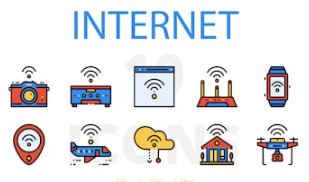When faced with an internet outage or unavailability, it can be frustrating and disruptive, especially in today’s connected world where we rely heavily on internet access for work, communication, and entertainment. Here are some steps you can take when the internet is unavailable to troubleshoot the issue and stay productive:
1. Check Connectivity:
- Verify that the issue is with your internet connection by checking if other devices in your home or office are also unable to connect.
- Ensure all cables are securely plugged in, and there are no issues with your modem, router, or network setup.
2. Restart Modem and Router:
- Power cycle your modem and router by unplugging them from the power source, waiting for a few minutes, and then plugging them back in.
- Restarting your networking devices can help resolve common connectivity issues and re-establish a stable connection.
3. Switch to Mobile Data:
- If you have a mobile data plan, consider using your smartphone as a mobile hotspot to access the internet in the meantime.
- Tether your device to your computer or other devices to stay connected and carry out essential tasks that require internet access.
4. Contact Your Internet Service Provider (ISP):
- Reach out to your ISP’s customer support to inquire about any ongoing outages, maintenance schedules, or issues affecting your internet connection.
- Your ISP can provide updates on the status of the outage and an estimated time for resolution.
5. Local Network Configuration:
- Check your computer’s network settings to ensure there are no issues with the local network configuration.
- Reset network settings, troubleshoot network adapters, or run network diagnostic tools to identify and fix connection problems.
6. Work Offline:
- Switch to offline mode on applications that allow you to work without internet connectivity, such as word processing software or productivity tools.
- Take advantage of offline capabilities to continue working on tasks that do not require real-time internet access.
7. Use Public Wi-Fi:
- If available and accessible, consider using public Wi-Fi hotspots in libraries, cafes, or co-working spaces to access the internet temporarily.
- Exercise caution when using public Wi-Fi and ensure you take appropriate security measures to protect your data.
8. Reschedule Online Activities:
- If the internet outage persists, reschedule online meetings, video calls, or other time-sensitive activities that require internet connectivity.
- Notify relevant parties about the connectivity issue and propose alternative arrangements for resuming the activities later.
9. Stay Informed:
- Monitor your ISP’s updates on social media, official websites, or customer service channels for real-time information.
- Stay informed about the progress of resolving the internet outage and anticipated restoration times.
10. Backup and Sync Data:
- Use cloud storage services to backup important files and data, ensuring that your information is accessible and secure even during internet disruptions.
- Enable automatic sync and offline access features to maintain access to critical documents and resources.
While internet outages can be inconvenient, taking proactive steps to troubleshoot connection issues, staying informed about the outage status, and leveraging alternative connectivity options can help mitigate the impact of internet unavailability. By following these tips and remaining patient during connectivity challenges, you can navigate temporary internet disruptions and maintain productivity until your internet connection is restored.
